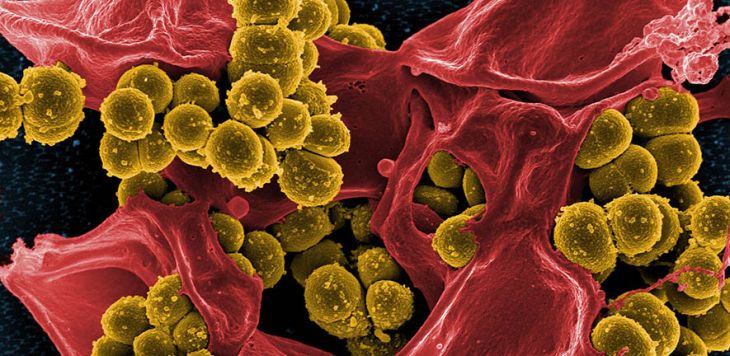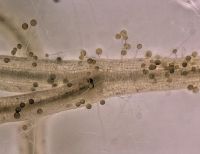AMR already causes substantial sickness and death worldwide, responsible for approximately 1.27 million deaths in 2019. Some estimates suggest that by 2050, it could kill as many as 10 million people each year.
Professor Sharon Peacock at the University of Cambridge – the driving force behind the UK’s pioneering COVID-19 Genomics UK Consortium – said: “Over the past century, antibiotics have transformed our ability to treat infection and illness and reduce mortality. But bacteria are becoming increasingly resistant, and with a limited pipeline of new antibiotics, we risk effectively returning to the pre-antibiotic era where we can no longer treat infections.
“When the world was hit by the COVID-19 pandemic, we showed how powerful a tool genomic surveillance could be in helping us fight back. This work grew out of its increasing application to real-world problems such as detecting outbreaks in hospitals and in the community – including food borne outbreaks. We now need to take what we learned from the pandemic including its bold and largescale use and reapply it to the complex problem of AMR.”
The genome, which is ‘written’ in DNA or RNA, consists of a string of nucleotides. Each time a copy of the genome is made, errors can arise – for example, one of the A, C, G and T nucleotides of DNA might get swapped. These changes allow scientists to create lineages – family trees – showing how the genome has evolved and spread. In the case of SARS-CoV-2, they allowed scientists to identify sources of infection, spot so-called ‘variants of concern’ and see whether public health measures such as lockdown, travel restrictions and vaccination were working.
The potential to improve surveillance of AMR pathogens may be even higher than for SARS-CoV-2 as the genome data can detect and track outbreaks, provide a prediction for effective antibiotic treatment, reveal the mechanism for resistance including mutations and the acquisition of new DNA, and help understand the movement of resistance mechanisms between bacteria.
Although surveillance of AMR bacteria is already used in some settings, the growing evidence of its potential has largely not translated into routine use. Writing today in The Lancet Microbe, a working group has set out how genomic surveillance could be applied to the problem of AMR more widely, including the barriers that need to be overcome, presenting a series of recommendations including building capacity, training of existing and new workforces, standardising the way that surveillance is done to detect AMR, and agreeing equitable data sharing and governance.
The group, which is funded by Wellcome, was initiated by Professor Peacock in conjunction with Wellcome SEDRIC (Surveillance and Epidemiology of Drug Resistance Infection Consortium) and delivered by a team of nearly 100 experts co-led by Professor Kate Baker and Dr Elita Jauneikaite. Five papers will be published in the same edition of the journal, highlighting the breadth of review and analysis undertaken by the team.
The series covers multiple areas for the application of genomic AMR surveillance including in hospital settings to help identify outbreaks and inform infection prevention and control and informing clinical decision-making at a patient level. They also highlight applications at a public health level to detect emerging threats and to design and assess suitable interventions like vaccination. It even has the potential to track AMR pathogens moving between humans, animals, and the environment. The team also considered future innovations in genomic surveillance of AMR, looking at how the next phase of genomic technologies and analysis methods might further transform the surveillance landscape.
A number of barriers will first need to be overcome, however. These include a lack of resources and political will, and the need for more training, particularly around bioinformatics (the analysis of genome data). There are also practical barriers, including in many countries a weak epidemiological surveillance and microbiology infrastructure, poor supply chains and pricing structures, and issues around effective cooperation and data sharing.
Professor Kate Baker, University of Cambridge, said: “We are on the cusp of realising the full potential for genomics in tackling AMR, but there is still a lot of work that needs to be done. We need the scientific, public health and political communities to work together to make this happen. AMR is an urgent problem. It is not something that will happen in years to come – it is happening now.”
Dr Elita Jauneikaite, Imperial College London, said: “We are going to be locked in an ongoing arms race with bacterial pathogens indefinitely. Genomic surveillance offers real promise to help us fight back, providing invaluable information to limit the spread and impact of AMR.”
Professor Peacock added: “It was clear from the pandemic that sequencing was a vital tool that was needed in every country worldwide. AMR is a global problem and once again we need to make sure countries worldwide are in a position both to contribute to, and benefit from genomic surveillance data.”
Janet Midega, AMR Research Lead at Wellcome and SEDRIC Board member, said: “Genomic research and surveillance are pivotal to detect pathogens and understand the transmission and trends of drug resistance in both high- and low-income settings. In order to respond effectively to this data, we need to ensure that the tools being developed are accessible and can be utilised by public health agencies around the world.”
Reference
Baker, K, et al. Overview: Harnessing genomics for antimicrobial resistance surveillance. The Lancet Microbe; 14 Nov 2023; DOI: 10.1016/S2666-5247(23)00281-1
















